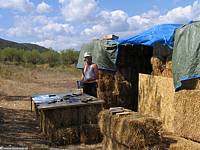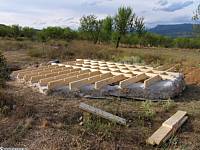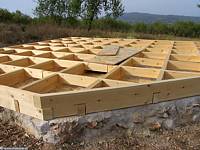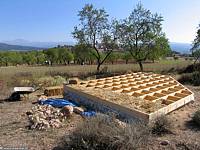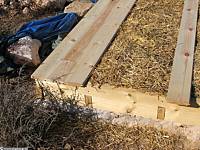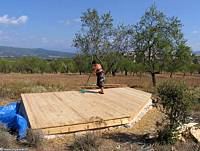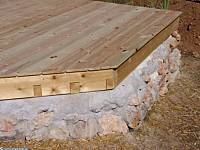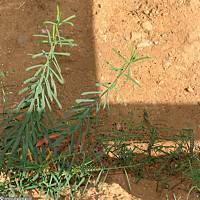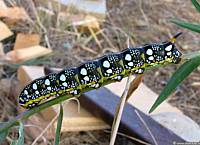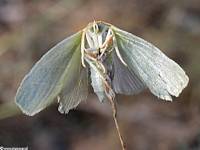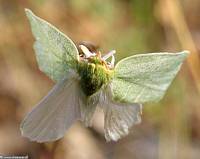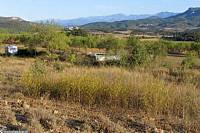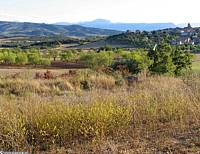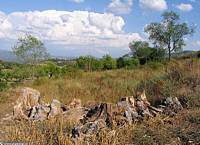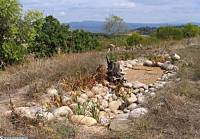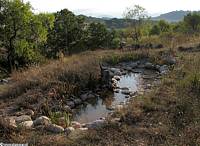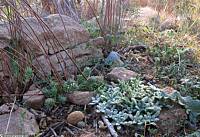|
|
Nature
Switched On
|
|
|
introduction |
2008 August 31 - September 21
The next step in the construction of the garden house was the
wooden floor. Five metre long pine joists (20x5cm) were used to span
from wall to wall, separated by beams of a smaller size (10x5cm).
OSB boards were fixed at the bottom to hold the straw that was
placed between the joists for insulation.
|
Workplace and bench among the straw bales. |
|
Framework of joists. |
OSB boards fixed. 10 Sept 17:51 |
|
|
Seven bales (110x45x35cm) disappeared into the floor.
|
||
|
Filling with straw. |
||
|
Dovetailing of the pine boards. |
||
|
Above the straw the wooden floor (pine) was fixed. It protrudes 2 cm
on all sides to offer possibilities to fix chicken wire and
hold the vertical plaster layer.
|
||
|
|
Floor finished. 21 Sept 12:48 |
|
|
The physical conditions in the
cellar below the floor
showed already some of their peculiarities. I discovered a Cypress
Spurge (Euphorbia cyparissias) inside with six
well-fed caterpillars of Hyles euphorbiae. I
have often seen this species all over the terrain but never more
than one at a time.
|
||
|
A colony of caterpillars bivouacking in the
cellar. |
||
|
This one was transplanted
outside and continued to get fatter, with a length of almost 10 cm. 20 Sept 8:39 |
||
|
Not related to the construction and intriguing for other reasons is this white moth, which showed a remarkable resemblance to a somewhat withered white flower with a green heart. |
||
|
Yet unknown moth, mimicking a white flower. |
31 Aug 9:51 | |
|
On many parts the terrain was coloured yellow with the flowers of Odontites luteus, just like last year. It is supposed to be a (hemi) parasitic plant but there often don't seem to be much green plant life to parasitize. |
||
|
Group of Odontites luteus. |
Same group, looking north-east. 15 Sept 8:52 |
|
|
Rain was, as usual, quite scarce this summer. The upper pond dried
completely up and some planted plants must have died. However the
Yellow iris (Iris pseudac |
||
|
Dry upper pond. The lower pond never dried
up, probably because of condensation and the absence of transpiring plants. |
A mountain range of trunks near
the upper pond. 31 Aug 18:12 |
|
|
After the first autumn rain. |
|
|
|
After the arrival of the autumn rains it is perhaps
a good moment to state the rate of success of
the plants we planted in
spring. I guess about 70% of the plants survived the summer. Important
casualties: Euonymus europaeus (2 dead out of 3
planted), Rhamnus lycioides (3/5), Sa Wooly yarrow (Achillea tomentosa) was planted on a relatively dry place but did remarkably well and was able to compete with the succulent Sedums and Sempervivums. It will certainly be one of the candidates to get a role on the green roofs we have designed for the (garden) house. |
||
|
Achillea tomentosa among Sedum sediforme
in the rock garden on the lower northern terrace. 20 Sept 9:29 |
||
|
introduction |
|
